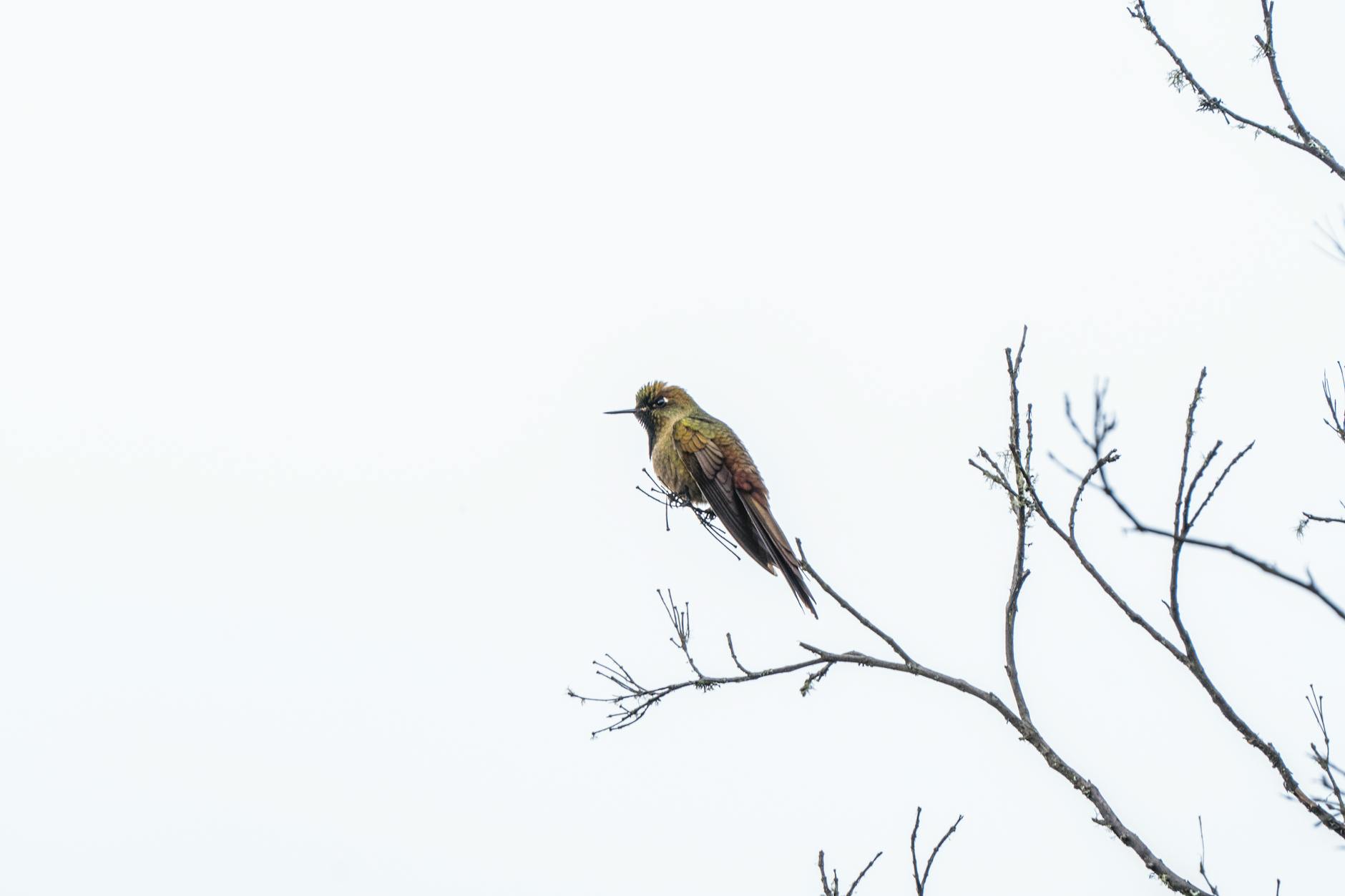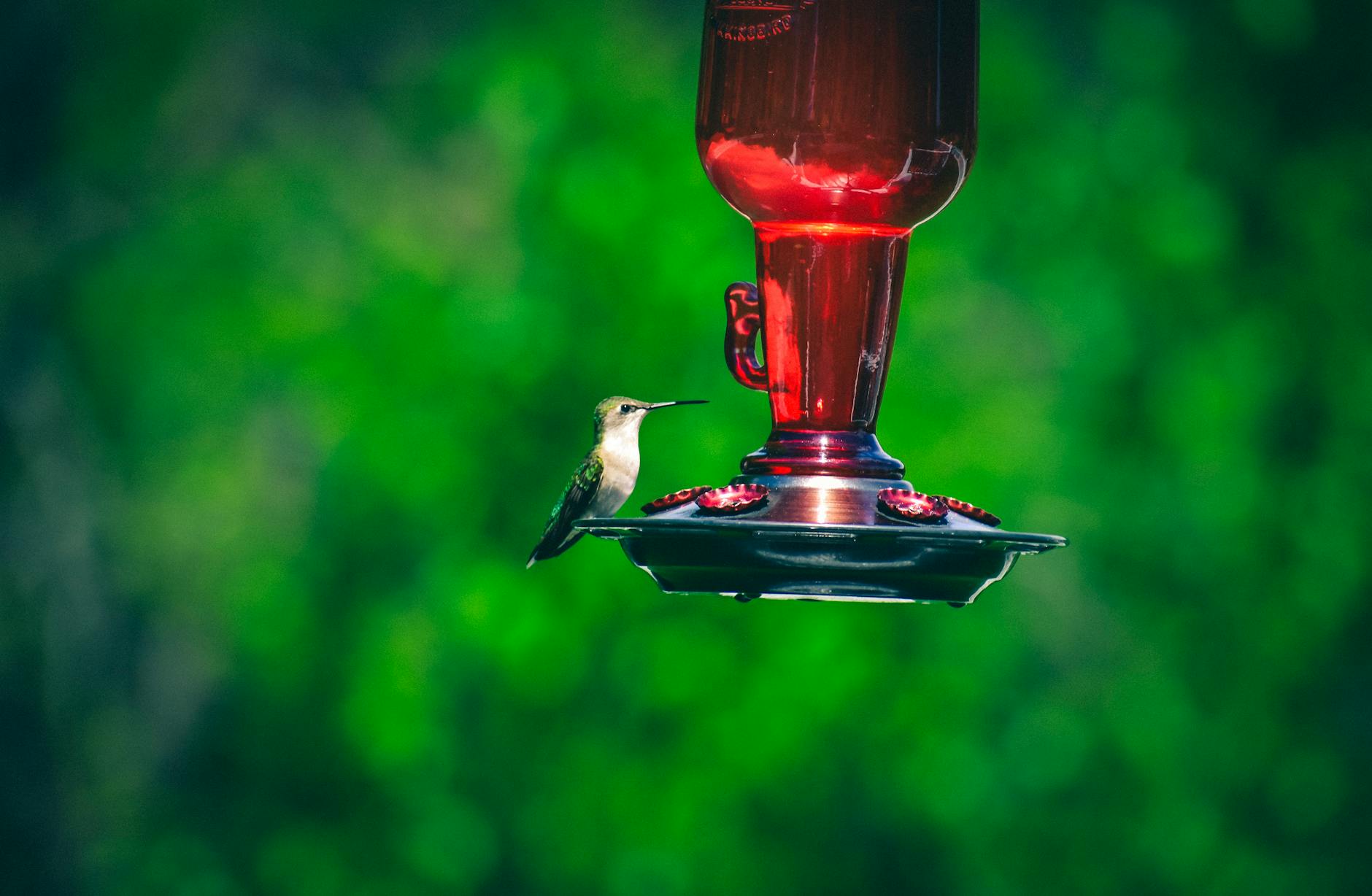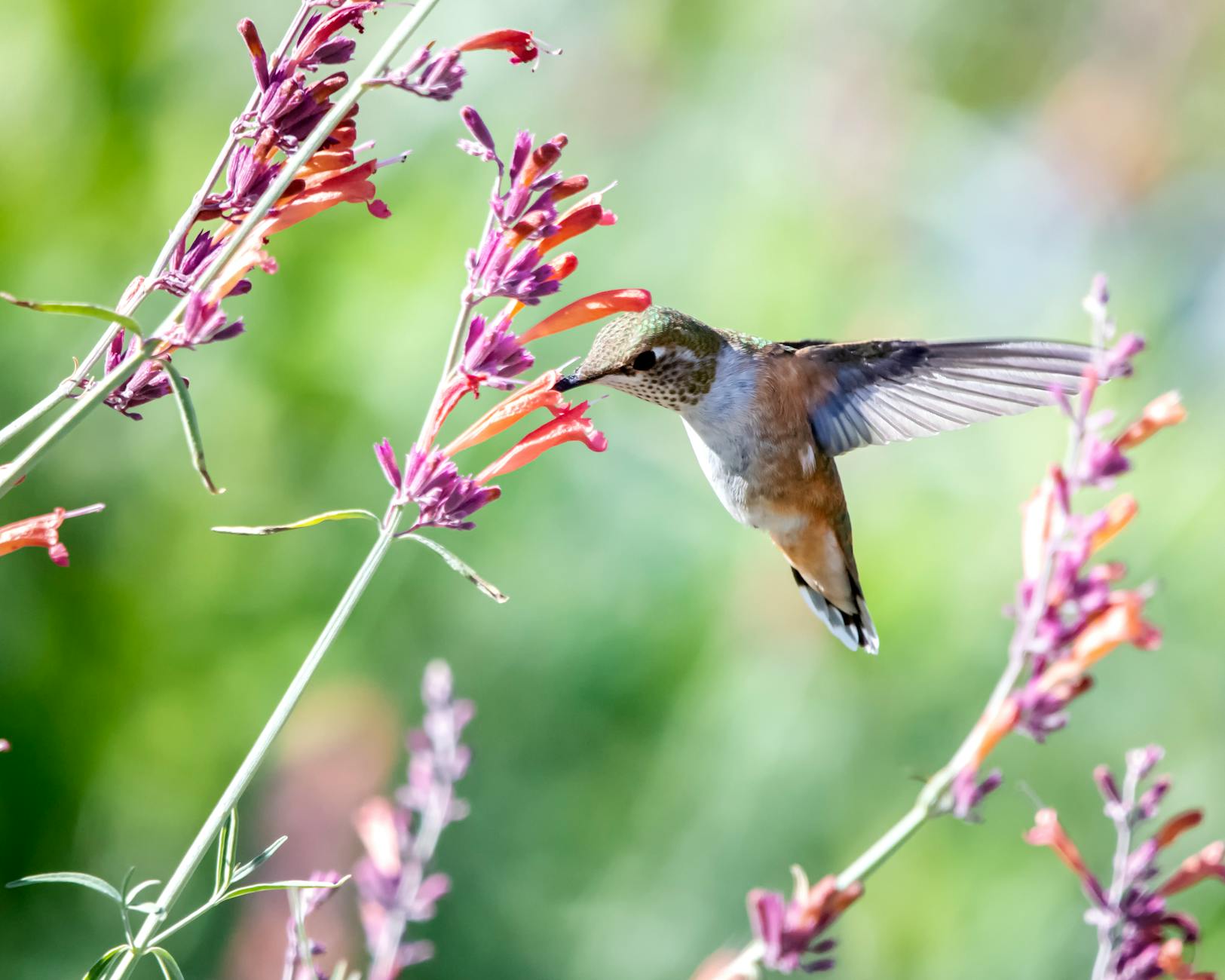
What Is the Black Headed White Collared Hummingbird? A Guide to This Rare Beauty
Small yet striking, the black-headed white-collared hummingbird leaves an unforgettable impression. Its jet-black crown contrasts boldly against its snowy throat, a pairing that feels almost otherworldly. Native to specific regions, this rare bird captures the attention of birdwatchers and researchers alike. What makes it truly unique? Its rarity, beauty, and habits set it apart from nearly all other hummingbird species. Keep reading to uncover what makes this elusive creature so special.
Appearance and Identifying Features
The black-headed white-collared hummingbird’s vibrant appearance is as captivating as a jewel glinting in sunlight. Its distinct physical traits make it unmistakable, even in the diverse world of hummingbirds.
The Striking Black Head
The bird’s jet-black head acts as its signature, setting it apart from other species. This glossy black crown seems to demand attention, offering a sharp contrast against its otherwise delicate features. The dark hue provides a dramatic frame for the bird’s eyes, enhancing the impression of alertness and curiosity. Imagine a miniature aviator donning a sleek helmet—such is the visual impact of this unique feature.

Photo by Juan Felipe Ramírez
The White Collar
The “white collar” refers to a streak of snowy feathers encircling the lower throat or upper chest. This pristine band doesn’t just add to its beauty—it makes the bird look almost regal. The contrasting white highlights the shimmer of darker feathers, serving as a frame that enhances its overall elegance.
Is there a purpose to such a striking accessory? While exact functional details remain under study, researchers suggest it may play a part in communication or mating displays. After all, in the natural world, a little flair goes a long way.
Size and Colour Patterns
This small hummingbird fits into the palm of your hand, as most do. Typically measuring between 8 and 10 centimetres, it’s a petite marvel. But it’s not just the size that’s remarkable—the bird boasts a plumage that appears to shift in hue under changing light. Deep metallic greens often decorate its wings and back, while the belly can reveal subtle hints of grey.
Nature appears to have painted this bird with intention, using broad strokes of bold colour juxtaposed with delicate detailing. It’s a masterpiece you can only appreciate in the wild.
Habitat and Distribution
The black-headed white-collared hummingbird lives in diverse yet specific ecosystems that sustain its life cycle. Known for its adaptability and beauty, this bird finds its home in tropical environments where resources thrive.
Geographic Range
The black-headed white-collared hummingbird is known to inhabit regions of Central and South America. It is primarily observed in Colombia and parts of Ecuador, though sightings remain scarce due to its rarity. These areas host a kaleidoscope of bird species, making it a haven for ornithologists and bird enthusiasts alike. Unlike common hummingbirds, this species tends to remain confined to isolated regions, highlighting its elusive nature.
While its presence in other countries hasn’t been consistently recorded, researchers continue to monitor its geographic footprint. Its migratory habits remain a question, but this unique creature is steadfastly tied to habitats offering abundant nectar sources.
Natural Habitat
This bird thrives in tropical and subtropical forests, where lush vegetation provides food and shelter. Rainforests, in particular, serve as a sanctuary due to their diverse flora, offering ample nectar-bearing plants. High humidity and warm temperatures make these habitats ideal.
The black-headed white-collared hummingbird is often found at elevations ranging from 1,000 to 2,500 metres, preferring higher altitudes that offer cooler climates and unique ecological niches. These elevations are home to flowering plants that other birds might not frequent, giving the hummingbird a competitive edge.
Imagine standing amidst a mountainous rainforest—dense greenery, mist dissolving in golden sunlight, and a hummingbird darting by faster than the eye can follow. This is the world this hummingbird calls home.

Photo by Skyler Ewing
The bird doesn’t just rely on flowers; it also visits small insects for protein. Dense undergrowth and flowering canopies become its stage, where it performs aerial acrobatics to secure its next meal.
Diet and Feeding Habits
The black-headed white-collared hummingbird relies on a diverse diet to fuel its rapid, energetic lifestyle. This tiny bird’s eating habits are as fascinating as its vibrant appearance, offering a glimpse into how it thrives in its specific habitat.
Primary Food Sources
A hummingbird’s life revolves around energy, and this species is no exception. Its primary source of sustenance is nectar. Flowers rich in sugar provide the high-octane fuel this bird needs to zip through the air with unmatched speed. The bird often visits brightly coloured blooms, such as those of tropical plants found in its natural habitat. Think of it as the bird’s daily energy drink.
But nectar isn’t enough. For protein, it hunts tiny insects like fruit flies, gnats, and spiders. These microscopic prey are caught mid-air or plucked from leaves. Combined, nectar and insects provide the nutrients needed to sustain not just their flight but also their overall health. Imagine needing enough fuel to power a Formula One car—that’s what this bird achieves daily.
The bird’s diet even influences its environment. By feeding on nectar, it assists in pollination, spreading pollen from flower to flower. So, not only does it thrive, but it also plays a vital role in maintaining the plants that sustain its ecosystem.
Foraging Behaviour
The hummingbird’s foraging routine is almost like a finely-tuned dance. It flits from flower to flower, hovering effortlessly as it drinks nectar using its long, narrow beak and specialised tongue. Its hovering ability—made possible by rapid wing beats—is key to reaching deep floral reserves. This unique skill sets it apart from other nectar feeders.
You might catch it defending its favourite plants. Yes, this tiny bird has a territorial streak. It won’t hesitate to chase away rivals that intrude on its feeding grounds. For a bird its size, it’s surprisingly fierce. Think of it as a pint-sized guardian keeping its garden safe.
Interestingly, it has a feeding circuit—a mental map of flowers that replenish nectar at just the right intervals. This ensures efficiency, maximising energy intake without wasting time. Imagine having a favourite coffee shop that you visit only when the barista has just brewed a fresh pot; this bird has a similar approach, but with flowers.

Photo by Chris F
Beyond flowers, its insect-catching strategy is equally graceful. It uses agile aerial moves to snatch flying bugs. This combines speed, focus, and incredible precision. Watching it is like seeing an aerial acrobat at work, every movement purposeful and efficient.
In the world of the black-headed white-collared hummingbird, every meal counts. Its foraging is a combination of skill, instinct, and adaptability, ensuring survival in an ever-changing rainforest.
Behaviour and Social Life
The behaviour of the black-headed white-collared hummingbird reflects a fascinating blend of independence and intricate social dynamics. Let’s explore how it interacts within its environment and approaches the significant act of reproduction.
Interaction with Other Birds
So, is this tiny bird a loner or a social butterfly? Typically, the black-headed white-collared hummingbird lives a rather solitary life. Each bird is highly territorial, fiercely defending its feeding area against any intruders. Imagine a miniature warrior standing guard over its nectar reserves—that’s the level of vigilance we’re talking about. It will chase off not just fellow hummingbirds but even larger species daring to cross its boundaries.
However, it doesn’t always stick to solitude. During the breeding season or in areas with fewer resources, this species may share space with others. This often results in brief but lively social interactions. The bird’s agility and speed come into play as it darts around competitors, ensuring it stays one step ahead. In moments like these, its world transforms into a lively aerial dance—both competitive and mesmerising.
Breeding and Mating Displays
The black-headed white-collared hummingbird puts on quite a show when it comes to courtship. Male birds prepare to dazzle potential mates with dramatic displays. They zip through the air, performing elaborate dives and bold aerial manoeuvres. It’s as if they’re choreographed gymnasts showing off their best moves to win over their audience. These dives are often accompanied by specific sounds created by wing vibrations or vocal trills, conveying their fitness and vitality.
Once paired, the real work begins. The female takes the lead in nesting. Using plant fibres, moss, and spider silk, she crafts a tiny, cup-shaped nest. This delicate structure often sits on a tree branch, blending seamlessly into the surroundings. Her work reflects an incredible commitment to ensuring her offspring’s safety, even in the face of predators or harsh weather.
These nests are just the right size—barely larger than a golf ball. And yet, within this small structure, the female nurtures her young, shielding them while continuing her foraging duties. This dedication underscores the tireless energy required to raise the next generation of this stunning species.
Though solitary for most of the year, this bird’s social rituals during courtship bring an entirely new dimension to its life. It’s a reminder that even the smallest creatures play out their stories of survival and connection.
Conservation Status
Despite their small size, black-headed white-collared hummingbirds face big challenges in the wild. From dwindling habitats to the growing threat of climate change, this unique species requires special attention to ensure its survival in an ever-changing world.
Threats to Survival
When it comes to threats, these hummingbirds are no exception to the pressures many species face today.
- Habitat Loss
Deforestation is the primary culprit. Tropical forests, the bird’s home, are being reduced for agriculture, roads, and human expansion. As trees fall, feeding and nesting grounds vanish. Imagine your home shrinking inch by inch every day—that’s the reality for these birds. - Climate Change
As temperatures rise, plants flower at different times, disrupting the hummingbird’s feeding schedule. Additionally, shifts in altitude caused by warming force species like these to relocate to higher elevations, cutting off access to food and suitable nesting sites. - Pesticides
Hummingbirds don’t just drink from flowers; they also eat insects. Pesticide use reduces their prey populations, making it harder for them to find essential protein sources. - Human Activity
Direct human interaction, such as capturing these birds for trade or unintentionally disturbing nests, poses another risk. In some cases, over-tourism in their habitats disturbs delicate ecosystems.
Efforts to Protect the Species
Thankfully, conservationists worldwide are stepping in to help. Here’s how efforts are being coordinated to secure the future of black-headed white-collared hummingbirds:
- Protected Areas
Various organisations are working to preserve tropical forests. Establishing reserves and parks ensures that habitats remain untouched by logging and urban development. One example is Colombia’s protected zones, which specifically target areas rich in biodiversity. - Community Awareness Programs
Awareness campaigns educate local communities on the importance of these birds to their ecosystems. Some initiatives encourage eco-tourism that benefits residents while safeguarding habitats. - Research and Monitoring
Scientists are studying the bird’s habits, breeding behaviour, and feeding needs to design better conservation strategies. For instance, monitoring migration and population trends offers insights into how climate change affects them. - International Collaboration
Groups like The International Hummingbird Society are stepping in to raise funds and awareness on a global scale. They highlight the significance of hummingbirds and support projects aimed at sustainability. You can learn more about these projects here. - Gardening for Conservation
Planting native nectar plants in gardens provides additional food sources. This grassroots effort allows individuals to play a direct role. The Hummingbird Monitoring Network champions such actions as an effective method to aid birds in urban areas. Learn more about their goals here.
While their challenges are many, these incredible birds inspire a collective effort to halt their decline. Every action, no matter how small, contributes to their survival.

Photo by Frank Cone
Collaboration between scientists, policymakers, and communities gives these birds a fighting chance. Their story is a reminder that nature’s beauty is worth protecting.
Why the Black-Headed White-Collared Hummingbird Matters
The black-headed white-collared hummingbird isn’t just a visual marvel; it’s an ecological and cultural treasure. Beyond its beauty, this tiny bird plays a major role in sustaining its environment and symbolic importance in scientific and human narratives.
Role in Pollination
Hummingbirds are nature’s airborne gardeners, and this species is no exception. As the black-headed white-collared hummingbird feeds on nectar, it inadvertently transfers pollen from one flower to another. This simple act creates a ripple effect in its ecosystem, ensuring plants reproduce and flourish.
Think of its role like a courier delivering parcels to keep a bustling city running smoothly. Without pollinators like this hummingbird, certain plants could wither, disrupting the delicate balance of life in tropical forests. Its work is especially critical in remote mountain habitats, where fewer pollinators are present to carry out this essential task.
Moreover, the bird’s unique preference for higher altitudes and specific flowering plants guarantees biodiversity thrives in otherwise isolated ecosystems. By supporting it, we preserve not just one species but an entire network of flora and fauna that relies on its pollination services.
Cultural or Scientific Significance
The black-headed white-collared hummingbird holds meaning beyond its ecological role. To conservationists and researchers, it’s a symbol of the challenges faced by rare and elusive species. Its scarcity and unique traits make it a focal point for studies on adaptability, biodiversity, and climate impact.
On a cultural level, hummingbirds often represent resilience, joy, and connection in myths and folklore. In regions where these birds are native, they’re celebrated as messengers of life and renewal. Spotting one can feel like catching a glimpse of magic in motion.
In scientific terms, the bird acts as a living indicator of environmental health. Its vulnerability to habitat loss and changing climates reveals shifts in tropical ecosystems. Protecting it isn’t just about safeguarding one species but understanding and addressing broader environmental challenges. It’s like solving one piece of a puzzle to grasp the bigger picture.
The black-headed white-collared hummingbird deserves to be celebrated—not just for its striking appearance but for the vital roles it plays in both natural and human narratives. Its value stretches far beyond the treetops it calls home.
Conclusion
The black-headed white-collared hummingbird captivates with its beauty and ecological importance. From its unique pollination role to its striking appearance, this species holds a special place in nature. However, its rarity makes it a reminder of the fragility of our ecosystems.
Appreciating this bird isn’t just about admiration—it’s about recognising the need to protect its habitat. Every effort counts, from supporting conservation initiatives to planting native flowers in your garden.
Let’s act now to ensure future generations marvel at this incredible bird. What can you do today to help nature thrive?





